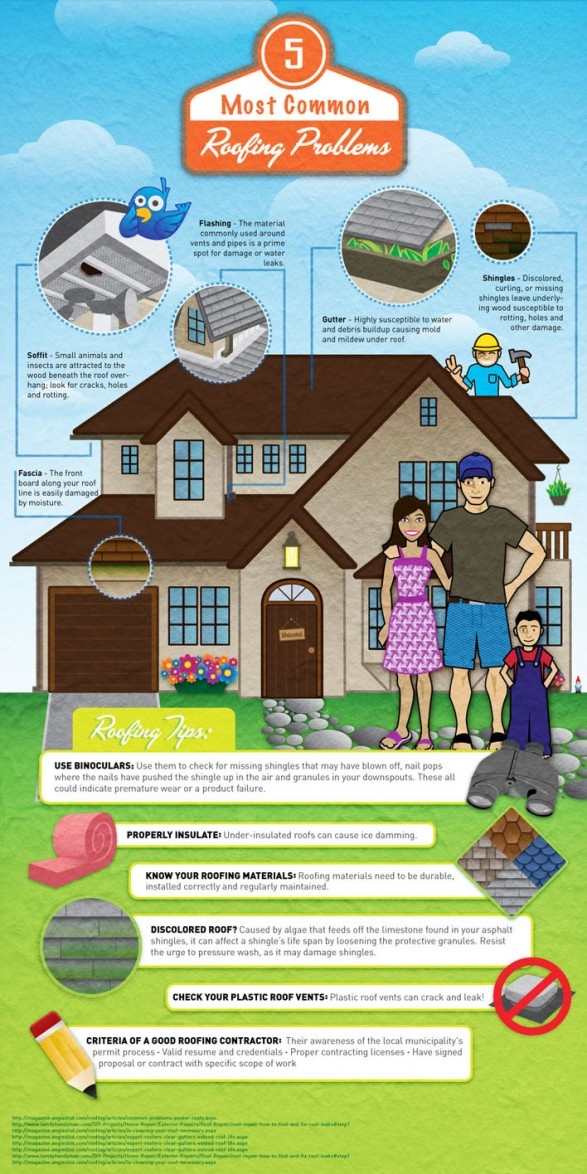Common Errors In Roofing System Setup And Methods To Avoid Them
Common Errors In Roofing System Setup And Methods To Avoid Them
Blog Article
Developed By-Allen Rogers
When you're planning a roof setup, it's simple to ignore essential details that can cause substantial troubles down the line. You might be attracted to reduce edges on material choice or avoid proper blinking installment, however these typical mistakes can cause costly repair work later on. Comprehending the value of air flow and sticking to neighborhood building ordinance is important for a successful task. So, what are the crucial actions you should take to ensure your roofing stands the test of time? Allow's check out some efficient strategies to prevent these pitfalls.
Poor Material Selection
When it comes to roof setup, picking the incorrect materials can cause expensive issues down the line. You may believe that any kind of roof material will do, however that's a common misunderstanding. skyroofingconstructiontx.com" to pick products that fit your local climate and the specific requirements of your home.
For example, if you stay in a location with heavy rain or snow, selecting asphalt tiles may not be the very best selection. Instead, consider more sturdy options like metal or slate.
Additionally, focus on the top quality of the materials you're thinking about. Low-cost materials might conserve you money upfront, yet they usually do not have longevity and can cause regular fixings or replacements.
You ought to also think of the design of your home and guarantee the products you choose will certainly keep its visual charm.
Lastly, do not fail to remember to speak with experts. They can provide beneficial understandings and advise materials that comply with local building codes.
Spending time in proper material option currently can help you stay clear of headaches and costs in the future, making your roofing job a success.
Inadequate Flashing Installation
Selecting the right products isn't the only element that can lead to roof covering troubles; poor flashing setup can likewise develop significant problems. Flashing is https://lukaspkeys.onzeblog.com/33233390/the-majority-of-property-owners-forget-important-indications-of-roofing-system-damage-however-identifying-them-early-can-save-you-from-costly-repair-work-later-on for directing water away from vulnerable locations, such as chimneys, skylights, and roofing valleys. If it's not set up correctly, you risk water breach, which can lead to mold growth and architectural damage.
When you set up blinking, ensure it's the appropriate kind for your roofing system's layout and the neighborhood climate. For example, steel blinking is typically much more long lasting than plastic in areas with hefty rain or snow. See to it the flashing overlaps properly and is protected snugly to prevent gaps where water can permeate via.
You should also take note of the setup angle. Flashing ought to be positioned to route water away from the house, not toward it.
If you're not sure about the setup process or the products needed, speak with a specialist. They can assist identify the very best blinking alternatives and ensure everything is set up appropriately, securing your home from possible water damage.
Taking these steps can conserve you time, cash, and frustrations down the road.
Neglecting Air Flow Requirements
While many home owners focus on the aesthetic and structural facets of roof installment, overlooking ventilation demands can cause severe long-term repercussions. Appropriate air flow is essential for controling temperature and dampness degrees in your attic room, preventing issues like mold development, wood rot, and ice dams. If you don't set up ample ventilation, you're establishing your roof up for failure.
To avoid this mistake, first, assess your home's particular air flow demands. A balanced system commonly includes both consumption and exhaust vents to promote airflow. Guarantee you've set up soffit vents along the eaves and ridge vents at the top of your roof covering. This mix allows hot air to escape while cooler air enters, keeping your attic area comfortable.
Also, take into consideration the type of roof covering material you've chosen. Some materials might require extra air flow strategies. Confirm your neighborhood building ordinance for air flow guidelines, as they can vary substantially.
Finally, do not neglect to examine your ventilation system consistently. Clogs from particles or insulation can hamper air movement, so keep those vents clear.
Verdict
Finally, avoiding common roof covering installment errors is crucial to ensuring your roof covering's long life and performance. By choosing the best materials for your climate, mounting flashing appropriately, and addressing air flow needs, you can protect against costly problems in the future. Do not neglect to more information on your own with neighborhood building codes and schedule normal assessments. With these steps, you'll appreciate a risk-free, durable roofing system that protects your home for years ahead. Happy roof covering!
